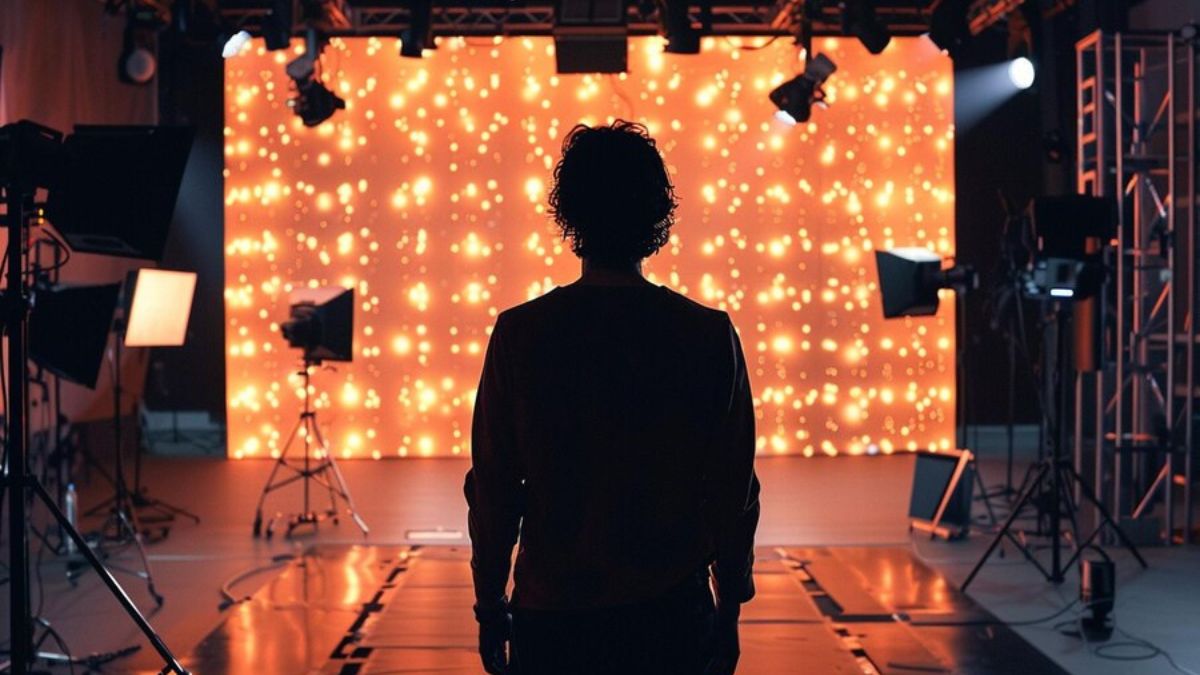The back casting room is a specialized space within industrial foundries, art studios, and educational institutions where the intricate process of metal casting is conducted. This guide provides an in-depth exploration of the back casting room, its function, the steps involved in casting, materials used, and its importance in manufacturing and creative arts. Whether you’re an aspiring sculptor or an industry professional, understanding the workings of this space is crucial for producing high-quality casts with precision and safety.
Understanding the Back Casting Room
The back casting room is essentially the heart of any casting operation. This space is equipped with all the necessary tools, machines, and materials to facilitate the casting process, which involves melting and pouring metals into molds. Typically located in a controlled environment, this room is crucial in both large-scale manufacturing and small-scale artistic creations.
What is Casting?
Casting is a manufacturing process where liquid metal is poured into a mold to form a specific shape as it solidifies. This method has been used for centuries to create tools, art, and parts used in various industries. In modern times, casting is still a fundamental part of production, whether for crafting large industrial components or delicate, intricate sculptures.
Why is the Back Casting Room Important?
The back casting room serves as a dedicated space where the casting process is performed under controlled conditions to ensure quality, precision, and safety. It is designed to house the essential equipment and materials required for metal casting, including furnaces, molds, crucibles, and cooling areas. In industries that rely on casting, such as automotive, aerospace, and jewelry-making, having a designated casting room helps streamline operations and ensures the casting process is conducted efficiently.
Key Elements of the Back Casting Room
There are several important components that make up the back casting room, each serving a specific function in the casting process. Understanding these elements helps to better appreciate the intricacies involved in casting and the precision required.
Furnace for Melting Metals
At the heart of the back casting room is the furnace, which is used to heat metals to their melting points. Depending on the type of metal being cast, different furnaces may be used, including induction furnaces, crucible furnaces, or cupola furnaces. The temperature is carefully controlled to ensure that the metal reaches the desired molten state without overheating.
Molds and Patterns
Molds are essential for shaping the molten metal. These are typically made from sand, plaster, or metal and can be customized to create a wide variety of shapes and designs. Patterns, which are replicas of the object to be cast, are used to form the mold cavity. The choice of mold material depends on the complexity and precision required for the final product.
Crucibles
A crucible is a container where the metal is melted before being poured into the mold. Crucibles are made from materials that can withstand extremely high temperatures, such as graphite or ceramic. The type of crucible used in the back casting room depends on the melting point of the metal being cast.
Cooling and Finishing Areas
Once the molten metal has been poured into the mold, it must cool and solidify. The cooling area is designed to allow the cast to cool gradually to prevent cracking or warping. After cooling, the cast undergoes finishing processes such as trimming, sanding, or polishing to achieve the desired final appearance and functionality.
The Metal Casting Process
The casting process in the back casting room can be broken down into several key steps, each crucial to ensuring the successful creation of a cast object.
Step 1: Pattern Creation
The first step in the casting process is creating a pattern. This pattern is an exact replica of the object that will be cast. It is typically made from wood, plastic, or wax, depending on the method of casting used.
Step 2: Mold Preparation
Once the pattern is made, a mold is prepared. The pattern is placed in a mold material, such as sand or plaster, to create a cavity. The mold must be carefully constructed to allow for proper venting and gating, which ensures that the molten metal flows into all areas of the mold.
Step 3: Melting the Metal
In the back casting room, the furnace is used to melt the chosen metal to its specific melting point. Depending on the metal, this can take several hours. The furnace must be carefully monitored to ensure that the metal reaches the correct temperature.
Step 4: Pouring the Metal
Once the metal is molten, it is poured into the mold through a process called gating. The molten metal fills the mold cavity and begins to cool. The pouring process must be done quickly and carefully to avoid defects such as air pockets or incomplete filling.
Step 5: Cooling and Solidification
After the metal has been poured into the mold, it is left to cool and solidify. Cooling times vary depending on the type of metal and the size of the cast. During this stage, the metal contracts slightly, so allowances must be made in the mold design to account for this shrinkage.
Step 6: Finishing the Cast
Once the cast has cooled, the mold is removed, and the cast object is revealed. At this point, the object may require additional finishing work, such as grinding or polishing, to remove excess material or to achieve a smooth surface.
Safety Measures in the Back Casting Room
Safety is paramount in the back casting room due to the high temperatures and hazardous materials involved. Proper personal protective equipment (PPE), including heat-resistant gloves, goggles, and aprons, is essential for all personnel. The room must also be well-ventilated to prevent the buildup of toxic fumes, and fire safety equipment should always be on hand in case of accidents.
Handling Molten Metal Safely
Dealing with molten metal presents significant risks. To minimize these, workers must be trained in proper handling techniques and follow strict protocols for pouring, transporting, and disposing of molten materials. Crucibles and other tools should be regularly inspected for signs of wear or damage to avoid accidents.
Ventilation and Air Quality
The melting of metals, particularly in large-scale industrial applications, can release harmful gases. Ensuring that the back casting room is equipped with proper ventilation systems is crucial for maintaining air quality and preventing exposure to dangerous substances.
Different Types of Casting Processes
In the back casting room, various casting processes can be employed depending on the desired outcome and the materials being used. Here are some of the most common types:
Sand Casting
One of the oldest and most widely used casting techniques, sand casting involves creating a mold from sand. This method is ideal for producing large parts that do not require a high degree of precision. The sand mold is created by packing sand around a pattern and then removing the pattern to leave a cavity for the molten metal.
Investment Casting
Also known as lost-wax casting, this process is commonly used for creating intricate and detailed parts. A wax model is coated in ceramic material to create a mold, which is then heated to remove the wax, leaving a cavity that is filled with molten metal.
Die Casting
Die casting is typically used for high-volume production of metal parts. It involves forcing molten metal into a steel mold, known as a die, under high pressure. This method allows for precise and rapid production of parts with a smooth surface finish.
Centrifugal Casting
In this process, molten metal is poured into a rotating mold. The centrifugal force pushes the metal to the outer edges of the mold, resulting in parts that are dense and have fine grain structures. This method is commonly used for producing cylindrical parts such as pipes and bearings.
Common Metals Used in the Back Casting Room
The type of metal used in casting depends on the application and the properties required for the final product. Below are some of the most commonly used metals in casting:
Aluminum
Aluminum is a popular choice in the back casting room due to its lightweight nature and resistance to corrosion. It is commonly used in the automotive and aerospace industries, as well as in household items and electronics.
Bronze
Bronze is often used in artistic applications, particularly for casting sculptures. It is durable, corrosion-resistant, and capable of capturing fine details, making it ideal for creating intricate works of art.
Cast Iron
Cast iron is known for its strength and heat resistance, making it a popular choice for creating heavy-duty components such as engine blocks, cookware, and industrial machinery parts.
Steel
Steel is one of the most commonly used metals in casting due to its high strength and versatility. It is used in a wide range of industries, including construction, automotive, and machinery manufacturing.
Modern Technologies in the Back Casting Room
While traditional casting methods are still widely used, modern technologies have revolutionized the casting process. These innovations have improved precision, efficiency, and safety in the back casting room.
3D Printing and Casting
3D printing technology is increasingly being integrated into casting processes, particularly for creating patterns and molds. Using a 3D printer, intricate designs can be produced with a high level of accuracy, which are then used to create molds for casting. This method reduces material waste and allows for faster production times.
Automated Furnaces and Pouring Systems
Automation has greatly enhanced the efficiency of the back casting room. Modern furnaces can be programmed to melt metals to precise temperatures, while automated pouring systems ensure that molten metal is poured consistently and accurately into molds. This reduces the risk of human error and improves the quality of the final product.
FAQs
What is the purpose of the back casting room?
The back casting room is a dedicated space where metal casting processes are carried out in a controlled environment, ensuring quality, precision, and safety in casting operations.
What types of metals can be cast in the back casting room?
Common metals cast in the back casting room include aluminum, bronze, steel, and cast iron, each offering specific properties depending on the application.
What safety measures should be followed in the back casting room?
Essential safety measures include wearing personal protective equipment, proper ventilation, and following protocols for handling molten metal and using casting equipment.
How does investment casting differ from sand casting?
Investment casting uses a ceramic mold created from a wax model to produce intricate parts, while sand casting uses a sand-based mold for larger, less detailed components.
What is the role of a crucible in the casting process?
A crucible is used to melt metal before it is poured into the mold. It is made from heat-resistant materials to withstand the high temperatures required for metal casting.
How has technology improved the casting process?
Modern technologies such as 3D printing and automation have improved the precision, efficiency, and safety of the casting process, allowing for faster production and reduced material waste.
Conclusion
The back casting room plays a pivotal role in industries and artistic endeavors that rely on the casting process. Understanding the equipment, materials, and techniques used in this space is essential for producing high-quality casts. With advancements in technology, casting has become more efficient, accurate, and safe, making the back casting room an ever-evolving hub of innovation in both manufacturing and the arts.











